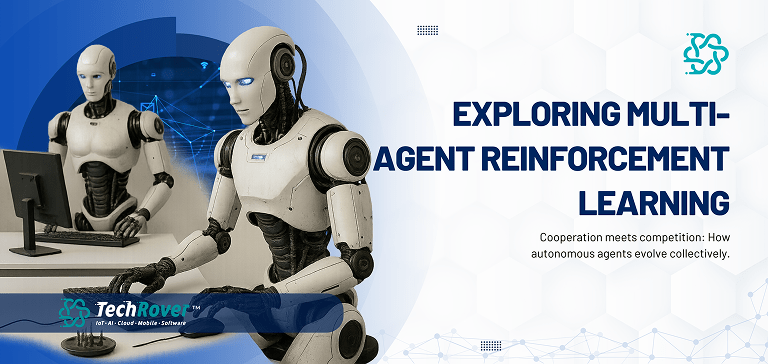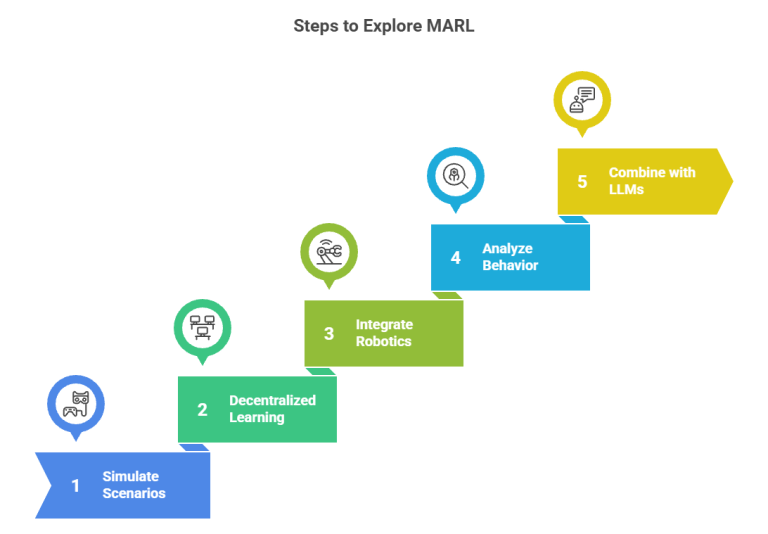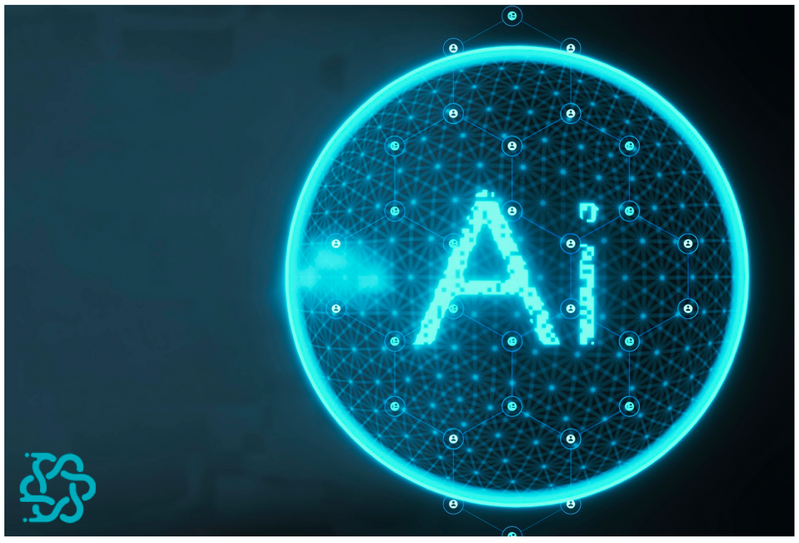Exploring Multi-Agent Reinforcement Learning

In a world increasingly run by intelligent systems—automated testing pipelines, distributed apps, AI-driven infrastructure—cooperation and competition between software agents isn’t futuristic anymore. It’s a real engineering challenge—and opportunity—today.
That’s where Multi-Agent Reinforcement Learning (MARL) comes in.
Unlike traditional RL, which focuses on training a single agent to perform a task, MARL explores how multiple software agents can learn, adapt, and interact—whether as collaborators, independent services, or even competitive bots within complex environments.
And this isn’t just theoretical. From automated DevOps workflows and multi-agent debugging tools to AI-driven simulations and autonomous code assistants, MARL is quietly redefining what’s possible in software engineering.
Let’s explore why MARL matters for developers, where it’s already having an impact, and how tech teams can experiment and build with it—today.
Why MARL Is a Game-Changer for Intelligent Software Systems
Traditional software agents or services are often rule-based or trained in isolation. But modern software systems are inherently distributed, dynamic, and interdependent.
MARL embraces this complexity.
Here’s how MARL changes the developer’s playbook:
Dynamic Environments: Agents interact in real-time—responding to changing system states, user inputs, and each other.
Emergent Behaviors: Through trial and error, agents learn optimal strategies like resource sharing, load balancing, or negotiation.
Scalable Intelligence: MARL lets teams simulate and train systems that adapt as they scale, instead of breaking under complexity.
By embedding MARL into your software architecture or tooling, you can build systems that learn and evolve as a team, not just as isolated modules.
Where MARL Is Already Driving Innovation in DevTech
Let’s look at software-specific scenarios where MARL is delivering tangible value:
Problem Space | MARL Application | Dev-Focused Use Cases |
Distributed Resource Management | Agents optimize compute, storage, or task scheduling | Serverless orchestration, cloud cost optimization |
CI/CD Automation | Bots learn to prioritize builds/tests based on context | Smart test runners, flaky test detection |
Autonomous Bug Resolution | Agents explore and patch code collaboratively | Multi-agent debugging assistants |
Code Search & Generation | AI agents retrieve, evaluate, and propose code solutions | Developer copilots coordinating in real time |
Simulation for Safety Testing | Agents stress-test environments through interaction | Multi-agent simulations for edge cases and errors |
Where Traditional Software Agents Fall Short
Classic software agents rely on predefined rules or single-point ML models. MARL, in contrast, enables dynamic, decentralized learning.
Challenge | Traditional Approach | MARL Advantage |
Hardcoded Logic | Fails in unexpected scenarios | Agents adapt in real time through trial-and-error |
Centralized Control | Bottlenecks scalability | Agents act independently but align through learning |
Static Codebases | Require manual optimization | Agents improve over time via continuous feedback |
Limited Coordination | No awareness of others | MARL enables inter-agent communication and cooperation |
5 Developer-Centric Ways to Start Using MARL Today
You don’t need to rewrite your platform from scratch. Start by experimenting with MARL where it makes sense:
✅ 1. Simulate Distributed Agents in Dev Environments
Use libraries like PettingZoo, MAgent, or OpenSpiel to model concurrent agents in simulated test environments.
✅ 2. Add MARL to Resource Scheduling or Task Management
Try using MARLlib or RLlib to train agents that optimize compute resources, test prioritization, or data flows.
✅ 3. Build Debugging Bots or Observers
Create lightweight agents that observe logs, monitor services, and suggest intelligent responses based on patterns.
✅ 4. Explore Multi-Agent LLM Assistants
Use multiple LLMs as agents for collaborative code suggestions, reviews, or even architectural decisions.
✅ 5. Train Software Bots in Simulated Environments
Set up controlled training environments for bots to explore release strategies, incident response, or configuration tuning.

The Techrover™ Take: Building Smarter Agentic Architectures
At Techrover™, we don’t just build smart tools—we help dev teams embed AI-native intelligence right into their engineering workflows.
We specialize in:
Multi-agent simulation frameworks tailored for software systems
MARL-enabled tools for DevOps, QA, and automation
LLM + MARL agent orchestration for collaborative software agents
Agent behavior analytics for optimizing workflows and reducing friction
From concept to implementation, we help you build intelligent agents that talk, learn, and code—together.
Smarter Software Starts with Smarter Agents
Multi-Agent Reinforcement Learning isn’t just for robotics or gaming—it’s a powerful new paradigm for software development.
Whether you’re building intelligent infrastructure, scaling devops systems, or experimenting with LLM-powered agents, MARL gives you the framework to build software that learns from interaction—not just data.
Ready to Prototype Intelligent Software Agents?
At Techrover™, we help developer teams explore, prototype, and scale MARL-powered systems—from smart test agents to autonomous cloud orchestrators.
Let’s build your next-gen software stack—powered by collaboration, guided by learning.


